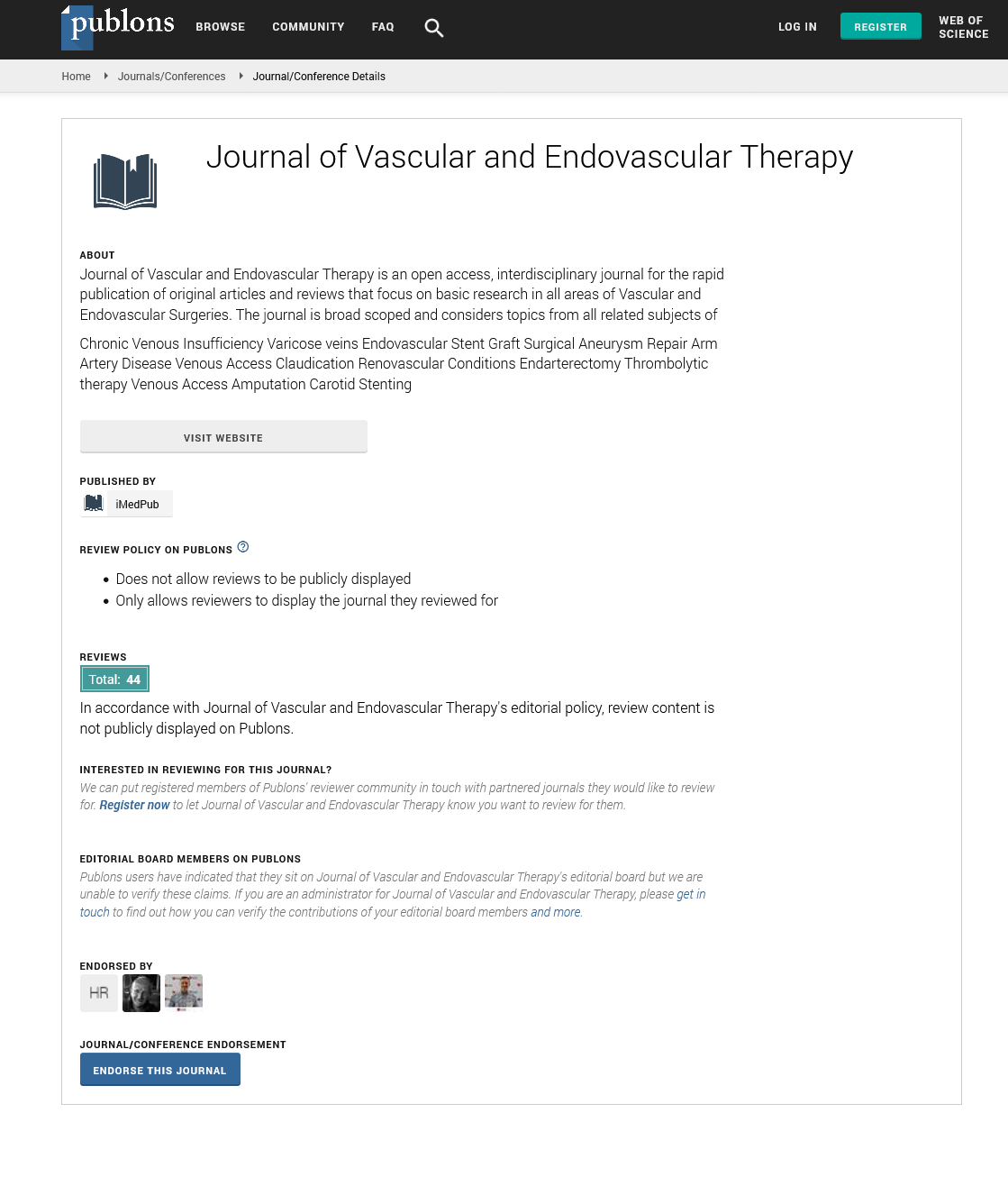ISSN : 2634-7156
Journal of Vascular and Endovascular Therapy
Left ventricular non-compaction cardiomyopathy: a case follow up with medical treatment
4th Edition of World Congress & Exhibition on Vascular Surgery
March 28-29, 2019 Rome, Italy
Nguyen Dang Dinh Thi
Khanh Hoa general hospital, Vietnam
Posters & Accepted Abstracts: J Vasc Endovasc Therapy
DOI: 10.21767/2573-4482-C1-006
Abstract
At birth, heart failure is caused by fetal cardiomyopathy or extracardiac conditions (such as sepsis, hypoglycemia, and hypocalcaemia). Left ventricular non-compaction cardiomyopathy (LVNC) is a genetic cardiomyopathy characterized by prominent ventricular trabeculations and deep intertrabecular recesses, or sinusoids, in communication with the left ventricular cavity. The clinical sequelae of these deformities are the syndrome of heart failure and the risk for arrhythmias and stroke. In many decades, with only morphological assessment available and no definitive genetic pathway, LVNC remains a diagnostic and management challenge. In this case, we presented an eleven-monthold girl diagnosed with LVNC at two-month-old based on prominent trabeculations and intertrabecular recesses on a visualized estimate on echocardiography. We have used the Jenni criteria to evaluate the presence of ofher LVNC. In Vietnam, we are lack of experience in CMR and cardiac CT in children and the genetic testing is not available as well. Her clinical present with Ross modified classification in stage III. In medical therapy we have used Captopril oral 0.6 mg/kg q8h every day; Digoxin oral 10 μg/kg/d and Spironolactone oral 1.5 mg/ kg q12h intermittency depending on clinical present. Bottle feeding with breast milk in the first six months and with powder milk, rice soup, seafood, fruits (oranges especially), multivitamins, Vitamin D3 and etc., since seven-month-old. At 11-month-old, her EF has improved from 33% to 43%, still malnutrition with 7 kg in weight, fatigue, shortness of breath, tachypnea and difficulty in feeding. In this case, we wish to make for a more accurate diagnosis and find a management approach with special attention to guidance for treatment in heart failure due to LVNC.
Recent Publications
1. Bennett C E and Freudenberger R (2016) The current approach to diagnosis and management of left ventricular noncompaction cardiomyopathy: review of the literature. Cardiol Res Pract 5172308.
2. Fujino M, Tsuda E, Hirono K, et al. (2018) The TNNI3 Arg192His mutation in a 13-year-old girl with left ventricular noncompaction. J Cardiol Cases 18(1):33-36.
3. Masarone D, Valente F, Rubino M, et al. (2017) Pediatric heart failure: a practical guide to diagnosis and management. Pediatr Neonatol 58(4):303-312.
4. Ying Nan Lin, Yu Qiang Wang, Yi Yu, et al. (2014) Left ventricular noncompaction cardiomyopathy: a case report and literature review. Int J Clin Exp Med 7(12):5130-5133.
5. Jenni R, Oechslin E, Schneider J, Attenhofer C, et al. (2001) Echocardiographic and pathoanatomical characteristics of isolated le�¿t ventricular non-compaction: a step towards classification as a distinct cardiomyopathy.Heart 86(6):666-671.
Biography
Nguyen Dang Dinh Thi is a medical doctor in general surgery especially in urology and andrology for 12 years in Khanh Hoa of general hospital in Nha Trang city, Vietnam. He graduated in 2006 as a general practitioner in Hue of Medicine and Pharmacy College. He learn for master of general surgery in two year and now he is an philosophy doctor candidate in urology surgery. In Vietnam, there is lack of experience in diagnosis and treatment with left ventricular noncompaction cardiomyopathy. So he is worry about her disease. He would like to receive more and more attention from all cardiologist on over the world to help his daughter. He would like to thank for all.
E-mail: thinguyenmd@gmail.com
Google Scholar citation report
Citations : 177
Journal of Vascular and Endovascular Therapy received 177 citations as per Google Scholar report
Journal of Vascular and Endovascular Therapy peer review process verified at publons
Abstracted/Indexed in
- Google Scholar
- Open J Gate
- Publons
- Geneva Foundation for Medical Education and Research
- Secret Search Engine Labs
Open Access Journals
- Aquaculture & Veterinary Science
- Chemistry & Chemical Sciences
- Clinical Sciences
- Engineering
- General Science
- Genetics & Molecular Biology
- Health Care & Nursing
- Immunology & Microbiology
- Materials Science
- Mathematics & Physics
- Medical Sciences
- Neurology & Psychiatry
- Oncology & Cancer Science
- Pharmaceutical Sciences
